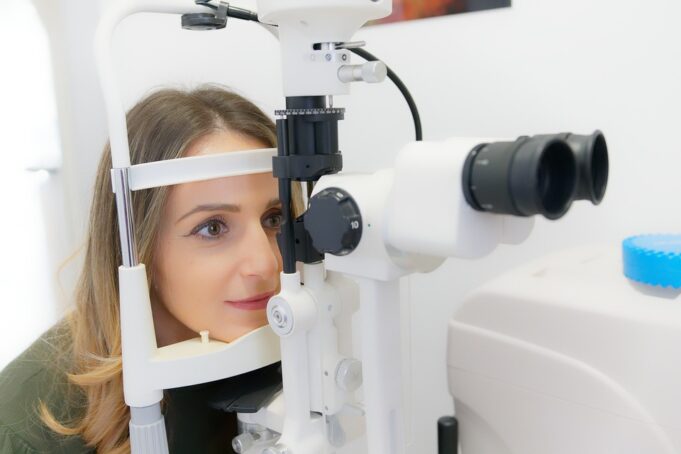How Urban Green Spaces Can Help Reduce the Risk of Breast Cancer for City Residents
Breast cancer is a serious concern for many women, and there are several factors that can increase the risk of developing this disease. One such factor is living in an urban environment, where exposure to pollution and other environmental toxins can be higher than in rural areas.
However, recent research has shown that access to green spaces in cities may help reduce the risk of breast cancer for city residents. This article will explore how urban green spaces can benefit our health and what future advances we might expect on this topic.
The Benefits of Urban Green Spaces
Urban green spaces include parks, gardens, forests, and other natural areas within cities. These spaces provide numerous benefits to city residents beyond their aesthetic appeal.
According to a study published by The Lancet Planetary Health journal (1), people who live near green spaces have lower levels of stress hormones like cortisol compared with those who live farther away from nature. Additionally, spending time in nature has been linked with improved mental health outcomes such as reduced depression symptoms (2).
But perhaps most relevantly when it comes to breast cancer prevention is that exposure to nature has also been linked with reduced inflammation levels (3). Chronic inflammation is associated with an increased risk of developing certain types of cancers including breast cancer (4).
Green Space Access & Breast Cancer Prevention
While more research needs to be done on exactly how much access one needs to green space for optimal benefits against inflammatory diseases like breast cancer; studies suggest even small amounts could make a difference.
A study published by Environmental Research Letters found that women living within 300 meters or less from any kind of public park had significantly lower rates of obesity which itself was correlated with decreased risks for multiple types of cancers including postmenopausal breast cancer(5).
Another study conducted at Harvard University found similar results: Women who lived in homes surrounded by more vegetation had a 13% lower risk of developing breast cancer (6). These findings suggest that even small amounts of exposure to nature can have a significant impact on our health.
Future Advances in Breast Cancer Prevention
As more research is conducted, we may see further advances in breast cancer prevention through access to urban green spaces. For example, some researchers are exploring the use of plants and other natural materials as a way to filter pollutants from the air in cities.
A study published by Environmental Science & Technology found that certain plants were effective at removing common air pollutants such as benzene and formaldehyde (7). This could be particularly beneficial for city residents who are exposed to higher levels of pollution than those living in rural areas.
Another area where future advances might occur is through “green prescriptions” or doctors prescribing time spent outdoors for patients with chronic diseases like obesity or high blood pressure. In New Zealand, this practice has already been implemented with promising results (8).
Conclusion
While there is still much research needed on how exactly green spaces can help prevent breast cancer; it’s clear that nature offers numerous benefits beyond just being aesthetically pleasing. Living near parks and gardens not only reduces stress but also reduces inflammation which itself has been linked with reduced risks for cancers including postmenopausal breast cancer.
The good news is that even small amounts of exposure to nature seem to make a difference so if you’re living in an urban environment without easy access to green space – consider taking regular walks around your neighborhood park or finding other ways you can spend time outside surrounded by trees and fresh air.
References:
1) Twohig-Bennett C., Jones A., The health benefits of the great outdoors: A systematic review and meta-analysis of greenspace exposure and health outcomes. Environ Res 2018 Jul;165: 4-13.
2) Bratman GN et al., Nature experience reduces rumination and subgenual prefrontal cortex activation. Proc Natl Acad Sci U S A 2015 Jul;112(28):8567-72.
3) Li Q et al., Effect of forest bathing trips on human immune function. Environ Health Prev Med 2010 Jan;15(1):9-17.
4) Coussens LM, Werb Z, Inflammation and cancer. Nature 2002 Dec;420(6917):860-7.
5) James P et al., Public park space and obesity among Chinese older adults: A case study in Hangzhou, China. Environmental Research Letters 2021 Mar;16:034024
6) Hart JE et al., Residential proximity to green space and breast cancer risk: The Nurses’ Health Study II. Int J Cancer 2018 Jun;142(11):2296-2304.
7) Kumar P et al., Indoor air quality reduction by a novel bio-based ceiling tile material. Environ Sci Technol 2012 Oct;46(20):10922-30.
8) Mackay J, General practitioners’ views on the role of green exercise in health care (Green Gyms Project). University of Edinburgh Centre for Environment & Human Health Report No.: CEH09/001
*Note: this site does not provide medical opinions or diagnosis and should not be relied upon instead of receiving medical attention from a licensed medical professional.




